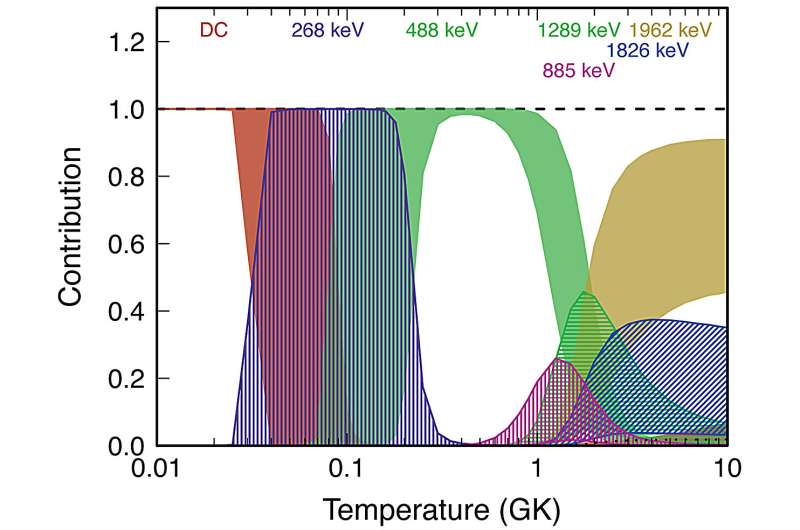This article has been reviewed according to Science X's editorial process and policies. Editors have highlighted the following attributes while ensuring the content's credibility:
fact-checked
peer-reviewed publication
trusted source
proofread
Nuclear astrophysical team confirms reaction path of rapid proton capture process

Type I X-ray bursts are the most frequent types of thermonuclear stellar explosions in the galaxy. As the key nucleosynthesis process in X-ray bursts, the rapid proton capture process (rp-process) is an important scientific frontier in nuclear astrophysics. Titanium-42 is a typical branching nucleus in the rp-process, so the accuracy of 42Ti(p, γ)43V reaction rate is crucial for comprehensively understanding the reaction path of rp-process in X-ray bursts.
Recently, an international nuclear astrophysical team led by HOU Suqing from the Institute of Modern Physics (IMP), Chinese Academy of Sciences (CAS), has derived the accurate 42Ti(p, γ)43V reaction rates and confirmed a reaction path of the rp-process.
The results were published in Astronomy & Astrophysics on Sept. 18.
Researchers from the University of North Carolina (U.S.), Duke University (U.S.), the Hungarian Academy of Sciences (Hungary), the University of Hull (U.K.) and the Joint Institute for Nuclear Astrophysics (U.S.) were also involved in the study.
The researchers obtained the new 42Ti(p, γ)43V reaction rates based on the complete resonance information and the latest nuclear mass of vanadium-43. They found that the new rates were different from previous rates from the statistical model by at least two orders of magnitude for forward rate and four orders of magnitude for reverse rate in the temperature range of X-ray burst interest.
The rp-process nucleosynthesis calculations showed that the adoption of the new forward and reverse rates could result in abundance variations for scandium and calcium by 128% and 49%, respectively, compared with the variations using the statistical model rates. On the other hand, the overall abundance pattern was not significantly affected.
By using the new rates, the researchers confirmed that the reaction path of 42Ti(p, γ)43V(p, γ)44Cr(β+)44V was a key branch of the rp-process in X-ray bursts.
More information: S. Q. Hou et al, Improved thermonuclear rate of 42Ti(p,γ)43V and its astrophysical implication in the rp process, Astronomy & Astrophysics (2023). DOI: 10.1051/0004-6361/202347054
Journal information: Astronomy & Astrophysics
Provided by Chinese Academy of Sciences


















